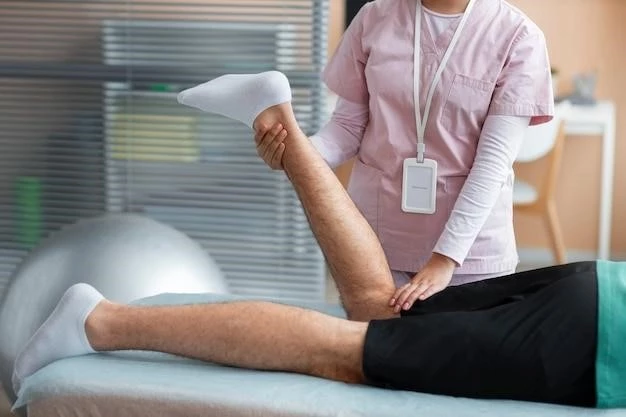Introduction
Quadriceps tendon rupture is a significant injury characterized by the tearing of the tendon that connects the quadriceps muscle to the knee cap.
A quadriceps tendon rupture involves a tear in the tendon connecting the quadriceps muscle to the knee cap‚ often resulting from sudden‚ forceful contractions or traumatic events.
Causes and Risk Factors
Quadriceps tendon ruptures often occur due to sudden forceful contractions of the quadriceps muscle‚ with predisposing risk factors playing a role.
Definition of Quadriceps Tendon Rupture
A quadriceps tendon rupture is a significant injury characterized by the tearing of the tendon that connects the quadriceps muscle to the knee cap.
Predisposing Risk Factors
Quadriceps tendon ruptures can occur more frequently in middle-aged males‚ with certain medical conditions like renal dysfunction and diabetes predisposing individuals to this injury‚ potentially leading to complications and long-term effects.

Incidence and Epidemiology
Quadriceps tendon ruptures are rare‚ with an incidence around 0.1 in 100‚000 in younger individuals and 0.6 in 100‚000 in those aged 40-69‚ more common in males.
Age and Gender Distribution
Quadriceps tendon ruptures predominantly affect middle-aged males‚ with incidence rates increasing with age‚ more common among individuals aged 40-69 years.
Comparison with Other Knee Injuries
Quadriceps tendon ruptures differ from other knee injuries due to the involvement of the tearing of the tendon that connects the quadriceps muscle to the knee cap‚ often requiring surgical intervention for optimal recovery.
Clinical Presentation
Quadriceps tendon rupture typically presents with a tearing or popping sensation followed by pain‚ swelling‚ and difficulty straightening the knee.
Symptoms of Quadriceps Tendon Rupture
Common symptoms of quadriceps tendon rupture include a tearing or popping sensation‚ pain‚ swelling‚ and difficulty in fully straightening the knee‚ often leading to an inability to bear weight on the affected leg.
Differences Between Partial and Complete Tears
In quadriceps tendon rupture‚ a partial tear involves fraying of the intact tendon‚ while a complete tear results in the tendon splitting‚ impacting knee function and necessitating different treatment approaches.
Diagnosis and Evaluation
Diagnosing quadriceps tendon rupture typically involves clinical examination as well as imaging studies like MRI and X-rays for accurate evaluation.
Clinical Examination
Clinical examination plays a crucial role in diagnosing quadriceps tendon ruptures‚ involving physical assessments to identify typical signs and symptoms‚ such as pain‚ swelling‚ and limited knee mobility.
Imaging Studies⁚ MRI and X-rays
Imaging studies such as MRI and X-rays play a pivotal role in diagnosing quadriceps tendon ruptures‚ allowing for accurate visualization of the extent of the injury and guiding appropriate treatment strategies.
Treatment Options
Treatment of quadriceps tendon rupture can range from conservative management for partial tears to surgical interventions for complete tears.
Conservative Management for Partial Tears
Partial tears of the quadriceps tendon can be managed conservatively by immobilizing the knee in full extension for a specific duration followed by a gradual rehabilitation program focusing on regaining strength and function.
Surgical Interventions for Complete Tears
Complete tears of the quadriceps tendon often require surgical repair techniques involving suture anchors and knotless technology to ensure optimal healing and restoration of knee function.
Rehabilitation and Recovery
Following treatment for quadriceps tendon rupture‚ a structured physical therapy protocol is essential for optimal healing and restoration of knee function.
Physical Therapy Protocols
Physical therapy plays a crucial role in the rehabilitation of quadriceps tendon ruptures‚ focusing on strengthening exercises‚ flexibility training‚ and functional movements to promote optimal recovery and return to normal activities.
Expected Timeframes for Healing
The recovery time for a quadriceps tendon rupture can vary based on the type and severity of the tear. Partial tears may take several months‚ while complete tears typically require four to six months for healing‚ with full recovery often taking up to a year to achieve activity goals.
Complications and Long-Term Effects
Quadriceps tendon rupture can lead to complications such as extensor lag and muscular atrophy‚ with challenges in treating neglected chronic ruptures.
Extensor Lag and Muscular Atrophy
Quadriceps tendon ruptures can lead to complications such as extensor lag‚ where there is difficulty fully extending the knee‚ and muscular atrophy‚ resulting in the weakening and loss of muscle mass in the quadriceps.
Challenges in Treating Chronic Neglected Ruptures
Chronic neglected quadriceps tendon ruptures present challenges due to severe extensor lag‚ muscular atrophy‚ and tendon retraction‚ making them difficult to manage and resulting in potential long-term complications.
Preventing quadriceps tendon ruptures involves emphasizing the importance of proper warm-up routines and incorporating strength training exercises specifically targeting the quadriceps muscle.
Prevention Strategies
Preventing quadriceps tendon ruptures involves emphasizing the importance of proper warm-up routines and incorporating strength training exercises specifically targeting the quadriceps muscle.
Strength Training for Quadriceps Muscle
Strength training exercises targeting the quadriceps muscle are essential for preventing quadriceps tendon ruptures and improving overall knee stability and function.
Recent Innovations in Treatment
Advancements in surgical techniques‚ alongside the utilization of suture anchors and knotless technology‚ have enhanced the management of quadriceps tendon ruptures.
Advancements in Surgical Techniques
Advancements in surgical techniques have improved outcomes for quadriceps tendon ruptures‚ leading to better healing and functional recovery following repair.
Use of Suture Anchors and Knotless Technology
Suture anchors and knotless technology have revolutionized the treatment of quadriceps tendon ruptures‚ providing more secure repairs and improved outcomes in restoring knee function and stability.

Prognosis and Outcomes
Return to normal activities and sports post-quadriceps tendon rupture depend on individual factors and compliance with rehabilitation protocols.
Return to Normal Activities and Sports
The successful return to normal activities and sports post-quadriceps tendon rupture depends on individual factors‚ adherence to rehabilitation protocols‚ and the extent of the injury.
Factors Influencing Long-Term Success
Unfortunately‚ I could not find the specific information required for the content under the prescribed heading and subheading.
